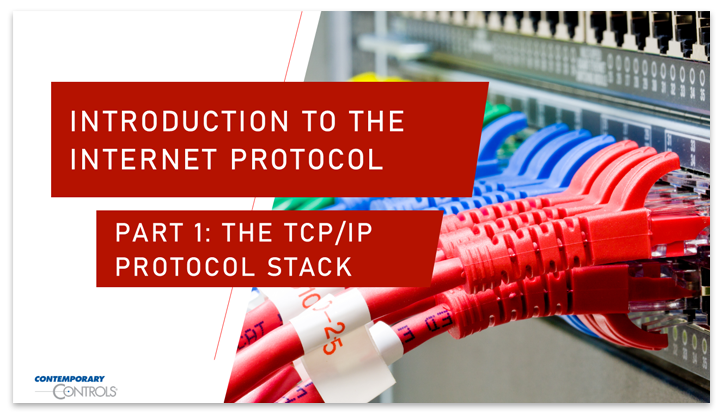Control Network Newsletter

New Video Series Explains the Internet Protocol as it Applies to Control Networks
A three-part video series is now available from Contemporary Controls that addresses the Internet Protocol (IP) portion of the TCP/IP stack as it applies to control networks. The videos are based on information provided by Contemporary Controls' Industrial Ethernet University (IEU), a free online resource to learn about industrial Ethernet protocols and applications. A summary of each video is described below.
Part 1: The TCP/IP Protocol Stack introduces the simplified four-layer TCP/IP protocol stack which contains:
- Data link and Physical layers
- Network layer
- Transport layer
- Application layer
The IP resides at the Network layer, and this video identifies how the IP routes messages between networks.
The IP is responsible for source and destination addresses. Part 2: IP Addresses reviews IPv4 32-bit addresses, including address format and range—0.0.0.0 to 255.255.255.255. The video also describes the five classes of IPv4 addresses—A, B, C, D, E—used to identify the network and the host.
The IP sends and receives blocks of data, called datagrams, between source and destination addresses. Part 3: The IP Datagram examines the IP datagram and how the datagram header and data components are used to fragment datagrams into manageable packets.
 Visit our Video Library to review our collection of videos, including Industrial Ethernet videos. Or visit the Industrial Ethernet University for more information on the IP and many other Industrial Ethernet courses.
Visit our Video Library to review our collection of videos, including Industrial Ethernet videos. Or visit the Industrial Ethernet University for more information on the IP and many other Industrial Ethernet courses.
